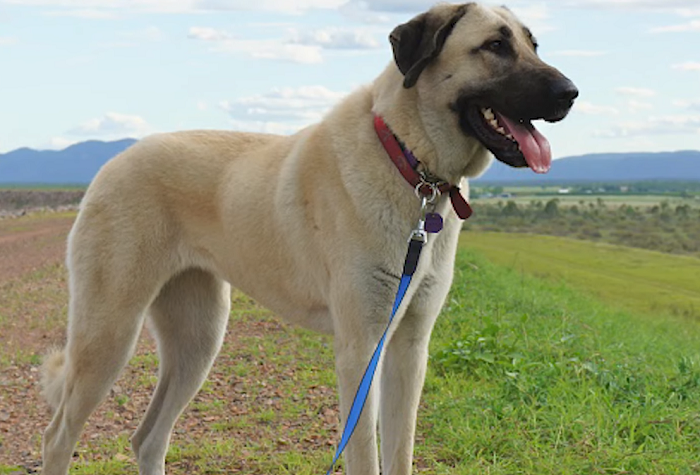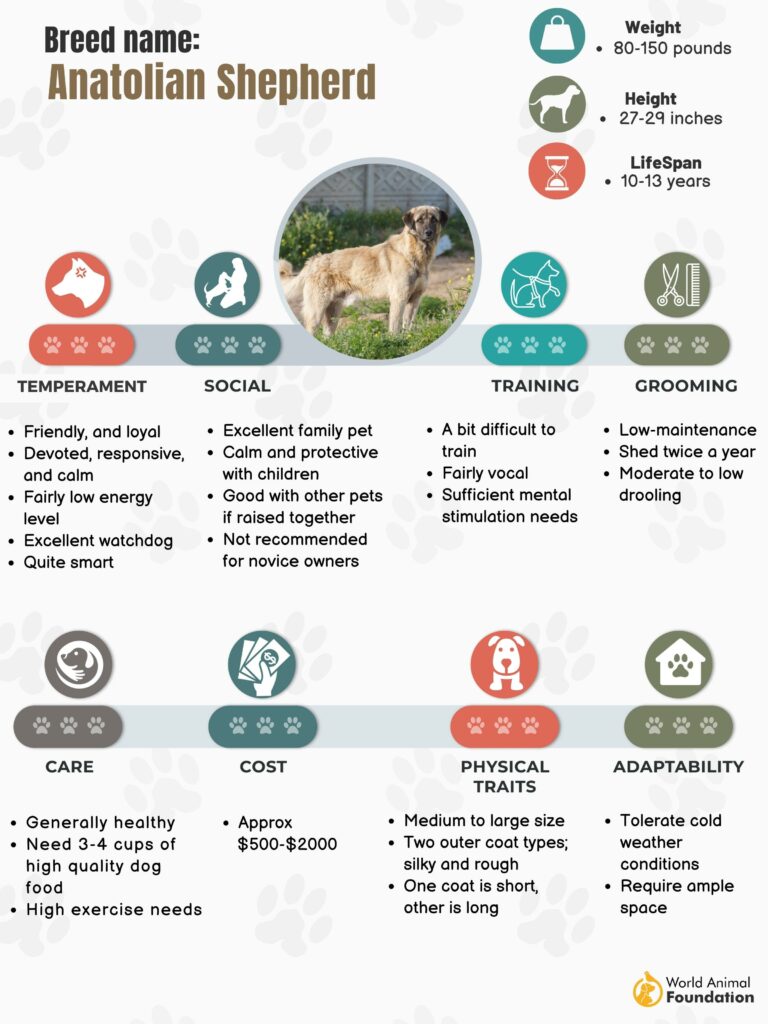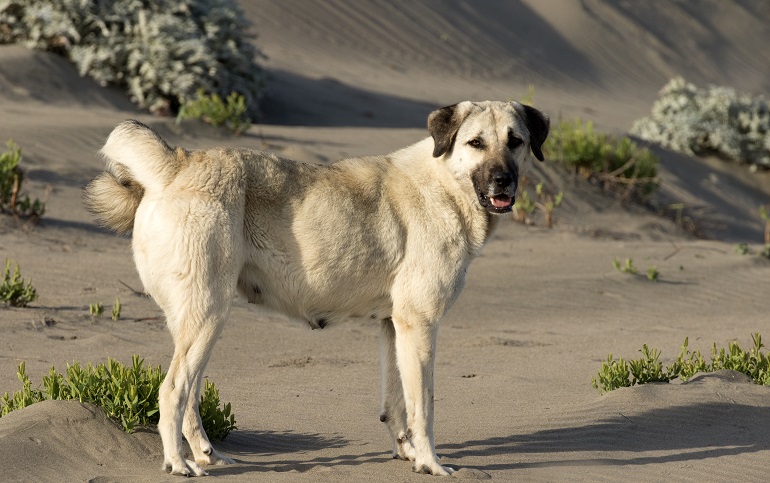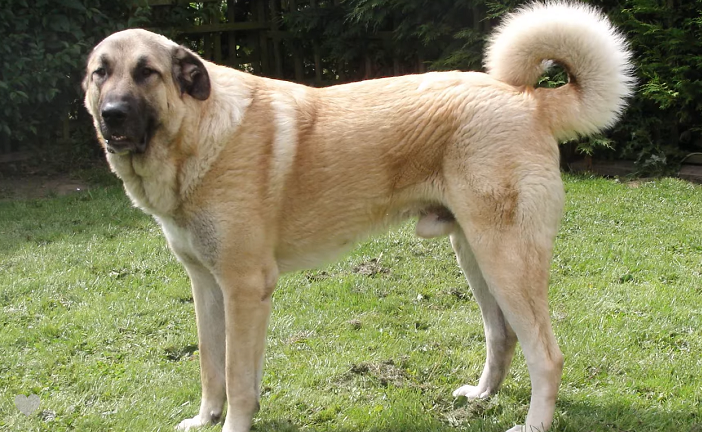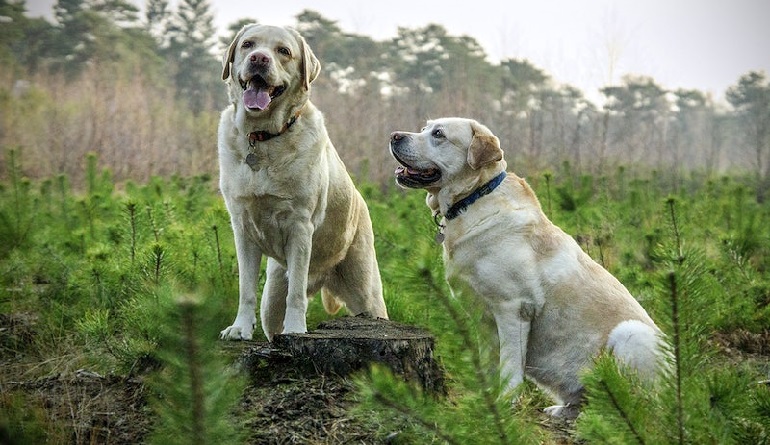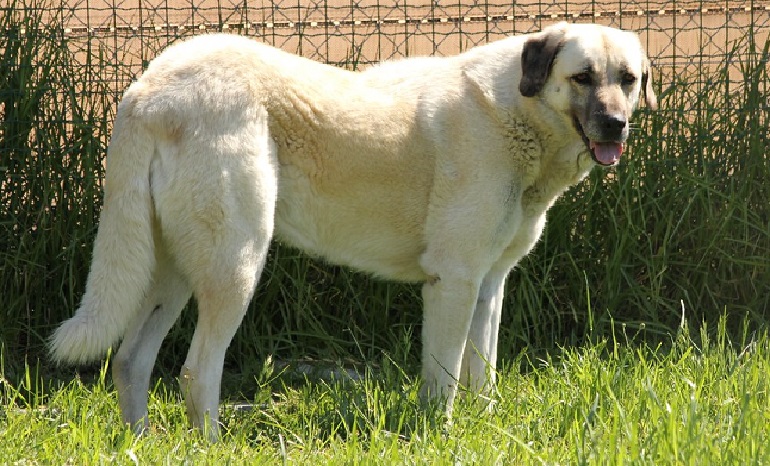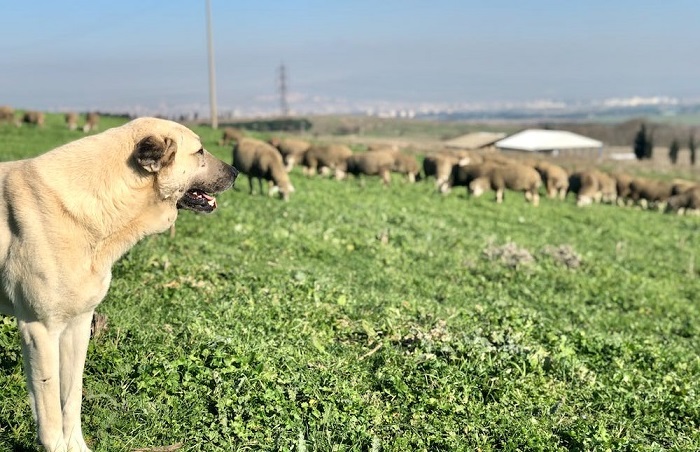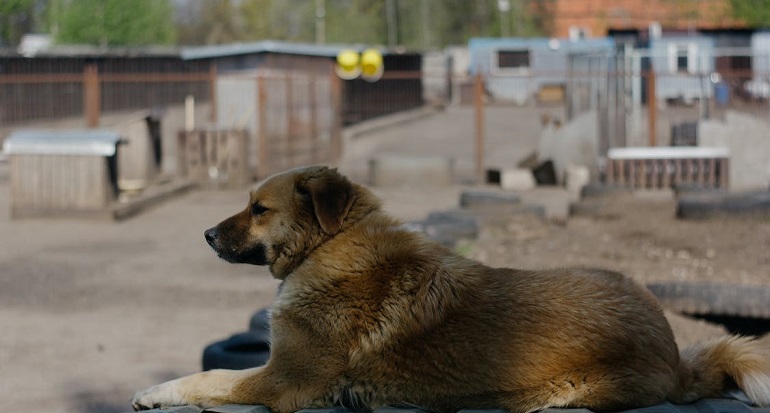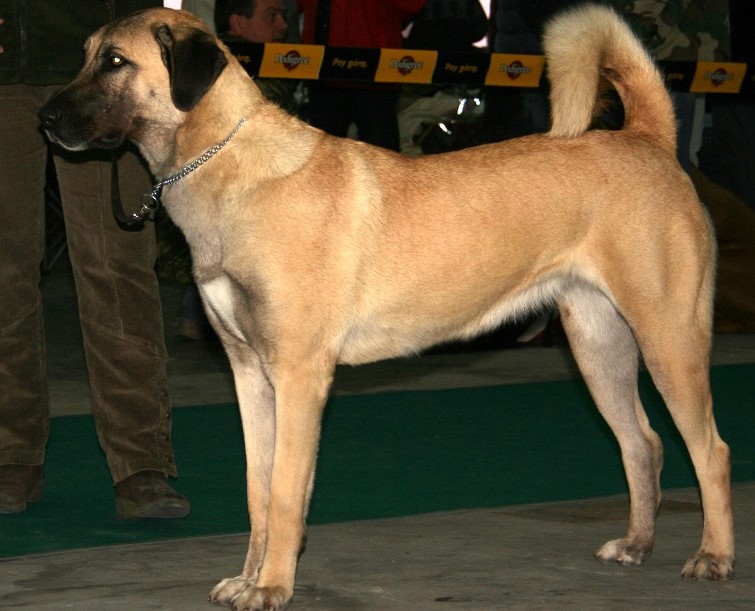Discover the majestic Anatolian Shepherd, a powerful and loyal guardian breed with roots deep in Turkey’s Anatolian plateau. This comprehensive guide by World Animal Foundation (Pet Yolo) delves into the fascinating facts surrounding this ancient breed, from their impressive size and independent nature to their historical role as livestock protectors. Learn essential information about their health concerns, specific care requirements, and what it takes to provide a fulfilling life for these devoted companions. Whether you’re an owner or simply intrigued by these magnificent dogs, prepare to uncover the captivating world of the Anatolian Shepherd.
Looking for a giant, muscular guard dog? The one which can not only protect you, but can also survive on its own? If so, then an Anatolian shepherd dog is what you should adopt next.
As the name indicates, this dog breed originated from the famous Turkish region, Anatolia. Due to the very same reason, canines of the same breed are known by different names, including Turkish shepherd, Kangal dog, and Anatolian Karabash dog.
However, from their second name, shepherd, many people assume that this dog might be used as a shepherd’s dog to herd the livestock. Whereas, this dog breed was originally used as a livestock guardian for protecting livestock from wild animals.
Since they feature large, muscular, and incredibly sturdy build, they can give a tough time, even to the super strong predators, including wolves and bears. Due to high protective instincts, these dogs make excellent family pets, showing fierce, untradeable loyalty.
Obviously, they have some other personality traits, too, which you might not like a lot. So before welcoming an Anatolian shepherd dog into your home, it’s better to know about this breed, its temperament, health & care.
For your convenience, we’ve jotted down all the details below. Read and find out whether this super-protective, combat canine meets your criteria for an animal companion or not.
About the Breed
Anatolian shepherd dogs are the truest representation of what we called guard dogs. They can stand on their long, strong legs for the entire day to ensure the safety and security of their family, without feeling tired or offended.
At first glance, these Anatolian shepherds might look serious and intimidating but believe me, they are real softies at heart. If trained and socialize at a young age, the canines can be trusted around kids and other dogs.
These dogs are generally friendly around kids and other animals, living in your house, but only if they are raised with them. Remember that an adult Anatolian shepherd dog might take weeks to embrace a new addition to its family.
Keeping that in mind, never leave your newborn or new pet with a Turkish shepherd alone. Even when this dog gets familiarized with the new face, supervise their playing session. Since these dogs are broad and powerful, they can accidentally knock your kid out, injuring them severely.
So yes, early socialization and training are important since their highly insecure natures, and independent approach could strengthen over time. Therefore, it’s better to show them the boundaries and make them familiarize with your close family and friends.
A headstrong Anatolian shepherd dog will not only be super difficult to correct, but it could also show destructive behaviors like excessive barking, chewing, and digging. Since the ancestors of these dogs used to work as flock guardians, they need a lot of exercises.
Due to the very same reasons, Anatolian shepherds prefer outdoor and country living conditions over city life. However, if you have a large house with an even larger yard to wander around, this Turkish shepherd will live happily over there – just make sure the property is completely fenced.
Considering this, we can’t recommend this breed to new pet owners or novice ones. However, if you know how to train a giant, independent, and stubborn dog, the decision of adopting an Anatolian shepherd will never disappoint you.
History of the Anatolian Shepherd Dog
In history, Anatolian shepherd dogs are known as working dogs, and their roots go back 4000 years ago. Various artifacts have confirmed that this breed used to exist even in 2000 B..C., making it one of the most ancient dog breed out there.
The Turkish shepherds are also believed to be the descendants of Roman Mollosian war dogs and Tibetan Mastiffs. Both these ancient dogs were famous as the flock guardian for their loyalty, independence, and hardiness and were brought to Turkey by central Asia’s wandering tribes.
The breeders of that time bred them and developed a new dog breed; Coban Kopegi (shepherd’s dog in English). So, the Anatolian shepherds that exist today are the direct descendants of Coban Kopegi.
Soon after their development, they got famous as shepherd’s companion really quickly. The thing which made them the favorite of every Turkish shepherd is that these dogs stood up against almost all the formidable predators – you might not believe but Anatolian shepherds can even bring bears and lions on their knees.
Turkish shepherds considered this dog breed so valuable that they didn’t export these dogs to the world outside. It was not until 1950 that Lt. Robert Ballard brought the pair of Turkish shepherd dogs to America. Soon after that, American pet owners, ranchers, and farmers got to know about this amazing dog and its utilitarian attributes.
Thus, the Anatolian shepherd dog club was made to encourage the breeding of these Turkish shepherd dogs. Finally, in 1996, the American kennel club recognized Anatolian shepherd dogs officially. However, the AKC national breed club moved this dog breed to a group of working dogs in 1998.
Considering their amazing combating abilities, Kangal shepherd and Anatolian shepherd were selected as guardian dogs by the cheetah conversation fund. Since these canines can be trained to scare off formidable predators, instead of killing them, they still prefer to work in various livestock farms in Turkey and America.
Anatolian Shepherd Dog Facts
- Anatolian shepherds, unlike other dogs, are not many people pleasers and prefer their own ideas over instructions. However, this only happens when they sense a threat regarding the safety of their flock.
- Anatolian shepherds are more prone to nuisance barking. Even during the day time, they may bark on getting suspicious about a new person or out of boredom.
- Anatolian shepherd canine has a life expectancy of about 10-13 years.
- Since the original Turkish shepherds are huge, only one to two pups are born in a single litter. If a breeder is producing 3-5 puppies in a litter, they must be undernutrition or unhealthy.
- Since their ancestors knew how to survive under unfavorable conditions, this dog can take care of himself (and also of its immediate family) without needing commands.
- These Turkish shepherd dogs have starred in various movies including friends with benefits, Kate and Leopold, and Cats and Dogs.
- Anatolian shepherd canines are not suitable for apartment life. Even though they don’t have too much energy to dissipate, they still need a wide area where they can roam around freely.
- These dogs can run super fast (at about 30mph).
- Although Turks consider Kangal dogs different from Anatolian shepherds, the AKC doesn’t consider them as the same breed. According to it, Kangal dogs is unnoticeably different in appearance and genetic makeup, from Anatolia dog, to be considered as a separate breed.
- The second largest dog is an Anatolian shepherd, named Kurt, who is 40 inches tall.
Anatolian Shepherd Dog Appearance
The very first thing you notice in a Turkish shepherd is undoubtedly its height and huge body. The dog features a heavy-boned, rugged, and muscular build with a strong head and deep, almond-shaped eyes.
Their droopy ears are about six inches long and sit close to their head. Other distinctive traits of this dog breed are square muzzles, high-set tails, and brown/amber eyes.
Size
Generally, a fully grown-up male may stand up to 29 inches tall, whereas a female might be 27 inches tall. However, as stated before, there are some Anatolian shepherds reported that were more than 40 inches tall.
Weight
Since they have large, bulky bodies, we can’t expect them to be lightweight either. The male may weigh 110-150 pounds, whereas the female may weigh up to 80-120 lbs.
Coat
Anatolian dogs have double coats however you’d find two major types of outer coats; small coat which grows only to 1 inch and feels quite silky. On the other hand, the second coat type comprises a rough coat that may grow up to 4 inches and as the name implies, feel rough to the touch.
Both these coat types feature a thick undercoat. Another worth mentioning thing here is that, regardless of what type of outer coat an Anatolian has, the coat length is extended around certain parts like the mane, neck, etc. Similarly, they feature profuse feathering around the tail, legs, and ears.
Color
When it comes to coat color, you’d get to see plenty of options. The most common ones are blue fawn, white, and a combination of white & biscuity. However, some other coat colors are there like brindle and liver but they are not so common.
Anatolian Shepherd Dog Temperament and Personality
When at home, among its family and friends, this Anatolian dog is super calm, affectionate, and even fun to be around. However, when outside, their protective nature might jump in, dominating their calm and loving personality.
They might jump onto the passersby, out of insecurity, so you better keep them on a leash, when outside. However, such embarrassing behavior can be controlled by providing your Anatolian shepherd puppy enough training and exposure to the world outside.
Remember that the Anatolian dog reaches adulthood in about four years, which means you can control these undesirable traits after a long span. Just keep in mind that these puppies tend to grow super fast, and since they are quite smart, they can absorb everything and every behavior from a very young age.
You can’t make these dogs friendly towards strangers or friends who meet you once in a while. Even the puppies tend to remain reserved with strangers. So, if you’ve adopted an unsocialized, untrained Anatolian dog, make sure to keep it as your only pet, away from all the other animals and unrelated people.
Unlike other dogs, Anatolian shepherds don’t see you as their owner or pack but as their flock. Considering this, you should not expect them to show extraordinary obedience. Still, if you get successful in building a strong bond with him, this dog will understand you and at least correct its annoying behaviors.
Even though Anatolian is not one of those super energetic dogs, it’s also not a couch potato. To suppress the destructive behaviors, which they tend to show out of boredom, they need to be involved in activities imparting sufficient mental stimulation.
Speaking of grooming and maintenance, Anatolian shepherds shed a lot, to prevent matting and tangling, remove the dead hair by thorough brushing out.
During the shedding seasons, you’d have to brush the coat almost every day. Similarly, trim your pet’s nails twice a month and brush your dog’s teeth every two to three days. However, the good thing is that this dog breed doesn’t need frequent bathing, as three to four baths a year are enough.
Anatolian Shepherd Dog Health and Care
Anatolian shepherd canines are generally healthy, they might develop some health problems when not getting an appropriate diet and exercise. Some of the most common health conditions these Turkish dogs may show are as follows;
Hip Dysplasia
It’s a degenerative health condition in which the hip bones and muscles break, causing severe pain and immobility. This condition is mostly passed on from one generation to another but can also develop from hyper-movement. In addition to hip dysplasia, elbow dysplasia is also quite common in such huge dog breeds.
Fortunately, the problem can be solved by surgery. Just don’t forget to inform the surgeon that this dog breed is sensitive to anesthesia.
Bloat
This problem is caused by overfeeding or eating food swiftly. Within seconds, your huge and broad Turkish shepherd may die. The only way to prevent it from happening is to feed your dog in the form of small, more frequent meals.
Hypothyroidism
The condition is related to the under-secretions of the thyroid gland, which is generally caused by nutritional deficiency. This condition can disturb the overall life quality of your dog, by causing weight gain, infertility, hair loss, and infections.
Ear Infections
Since Turkish dogs have long, floppy ears, they tend to catch infections more quickly, if not cleaned regularly. Therefore, make sure to check for infections inside the ears and clean the dirt and debris.
Make sure you are feeding only high-quality dog food to your Anatolian dog. Also, discuss the feeding requirements with your vet to get to know about the right portion size according to your dog’s age.
Anatolian Shepherd Dog Training
Even though this dog is quite intelligent, it doesn’t mean that it’s also easy to train. Due to high urges to dominate its flock and a relentlessly driven mindset, this dog will give you a tough time during agility and obedience training.
However, regardless of how hard it seems, you should start your dog’s training from this very point and teach them to obey your commands. Start with basic commands like sit, stand, stay, go, etc. After this, make them learn to walk on a leash calmly, even on a long walk.
The most important thing that you need to teach your pup is who is the leader here. Otherwise, he’ll consider himself the owner and leader of your house and won’t respect or obey your commands.
Remember that these Turkish dogs come with a super annoying stubborn streak which means you can never force them to learn something unless they want to.
Keeping that in mind, you should never opt for negative reinforcement training methods since they might spoil your dog, even more, shutting him down completely to you and your commands. And if you think you can’t train this stubborn canine, consider hiring a professional trainer.
Conclusion
An Anatolian shepherd puppy may cost anywhere from $800-$1200 however if you want a Turkish shepherd, free of cost, consider adopting one from rescue groups and shelter homes.
Before purchasing a pup, check for its health clearance certificates. And despite all the paperwork, if your pup develops a health problem, take them to the veterinary care centers as soon as possible.
The Anatolian Shepherd, a powerful and devoted guardian breed, demands respect and understanding. While their imposing size and protective instincts are impressive, potential owners must be prepared for their independent nature and training needs. Prioritizing socialization and consistent training from puppyhood is crucial for a well-adjusted dog. Providing for their physical and mental enrichment, along with proactive healthcare addressing breed-specific concerns like hip dysplasia, ensures a long and fulfilling life for these loyal companions. Ultimately, the Anatolian Shepherd offers unwavering dedication to those prepared to meet their unique requirements.

